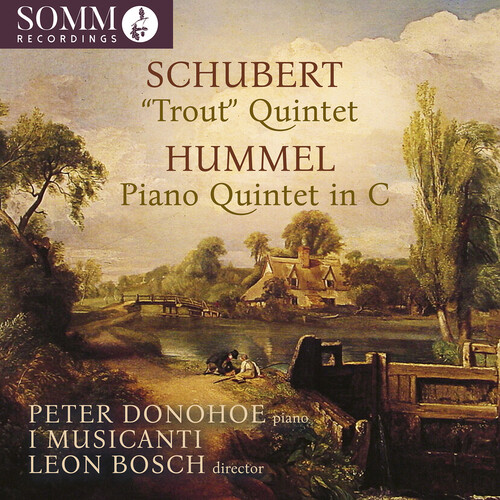Show results for
Deals
- 4K Ultra HD Sale
- Action Sale
- Alternative Rock Sale
- Anime sale
- Award Winners Sale
- Bear Family Sale
- Blu ray Sale
- Blues on Sale
- British Sale
- Classical Music Sale
- Comedy Music Sale
- Comedy Sale
- Country Sale
- Criterion Sale
- Cult Films sale
- Drama Sale
- Electronic Music sale
- Horror Sci fi Sale
- Jazz Sale
- Kids and Family Sale
- Metal Sale
- Music Video Sale
- Musicals on Sale
- Mystery Sale
- Naxos Label Sale
- Page to Screen Sale
- Paramount Sale
- Rap and Hip Hop Sale
- Reggae Sale
- Rock
- Rock and Pop Sale
- Rock Legends
- Soul Music Sale
- TV Sale
- Vinyl on Sale
- War Films and Westerns on Sale

Schubert & Hummel: Piano Quintets
- Format: CD
- Release Date: 10/17/2025

Schubert & Hummel: Piano Quintets
- Format: CD
- Release Date: 10/17/2025
- Composers: Franz Schubert, Johann Nepomuk Hummel
- Label: Somm Recordings
- UPC: 748871071223
- Item #: 2740227X
- Genre: Classical Artists
- Release Date: 10/17/2025
Product Notes
SOMM Recordings presents an intriguing pairing of chamber works that share the unusual and expressive instrumentation of piano, violin, viola, cello, and double bass: Johann Nepomuk Hummel's 'Military' Quintet in C major and Franz Schubert's Piano Quintet in A major, his Trout Quintet. Extraordinarily, this is a first recording of Hummel's 'Military' Quintet.' It is an amazing find by the virtuoso double-bass player Leon Bosch, Artistic Director of the mixed-instrument chamber ensemble I Musicanti, with whom he performs here. They're joined by Peter Donohoe, laureate of the Tchaikovsky Competition and acclaimed as one of the foremost pianists of our time.
Johann Nepomuk Hummel's gift as a composer was matched by his excellence as a pianist. A child prodigy, Hummel was taught and housed by Mozart for two years, and he studied further with Clementi, Haydn, Albrechtsberger, and Salieri. Hummel's mastery as a pianist and his compositional personality, admired by Liszt, shine through in his two piano septets featuring winds, brass, and strings, which he also arranged for a combination not uncommon at the time of piano, violin, viola, cello, and double bass. It was in October 1829, nearly a year after Schubert's death, that Hummel completed his 'Military' Piano Septet No. 2. For publication in Vienna the following year, he also prepared a piano quintet version, again arranged for that ensemble of piano, violin, viola, cello, and double bass. The Septet's scoring-for piano, flute, clarinet, trumpet, violin, cello, and double bass- already included four of the five of those instruments, so in effect the alternate version redistributes the wind and brass parts among four strings with added viola. It is this version that receives it's premiere recording on this release. Franz Schubert's Trout Quintet came about during a walking holiday in the Alps in 1819, when he made the acquaintance of Sylvester Paumgartner, an amateur cellist who promoted chamber concerts in his home. He greatly admired Schubert's lied, Die Forelle ("The Trout"), and he commissioned a set of variations based on the song's melody. At the time, Paumgartner had brought together a group of musicians to perform Hummel's Piano Quintet in E flat minor-the arrangement Hummel made of his first piano septet-and suggested that Schubert write his new variations for that same quintet ensemble of pianist, violinist, violist, cellist, and double bass player. Schubert being Schubert, he not only composed a set of five variations on Die Forelle, but he created a five-movement quintet that featured the variations as the fourth movement of a work that has become one of the most renowned and beloved in the chamber repertoire. It is Schubert's first mature chamber work. He was twenty-two years old.

